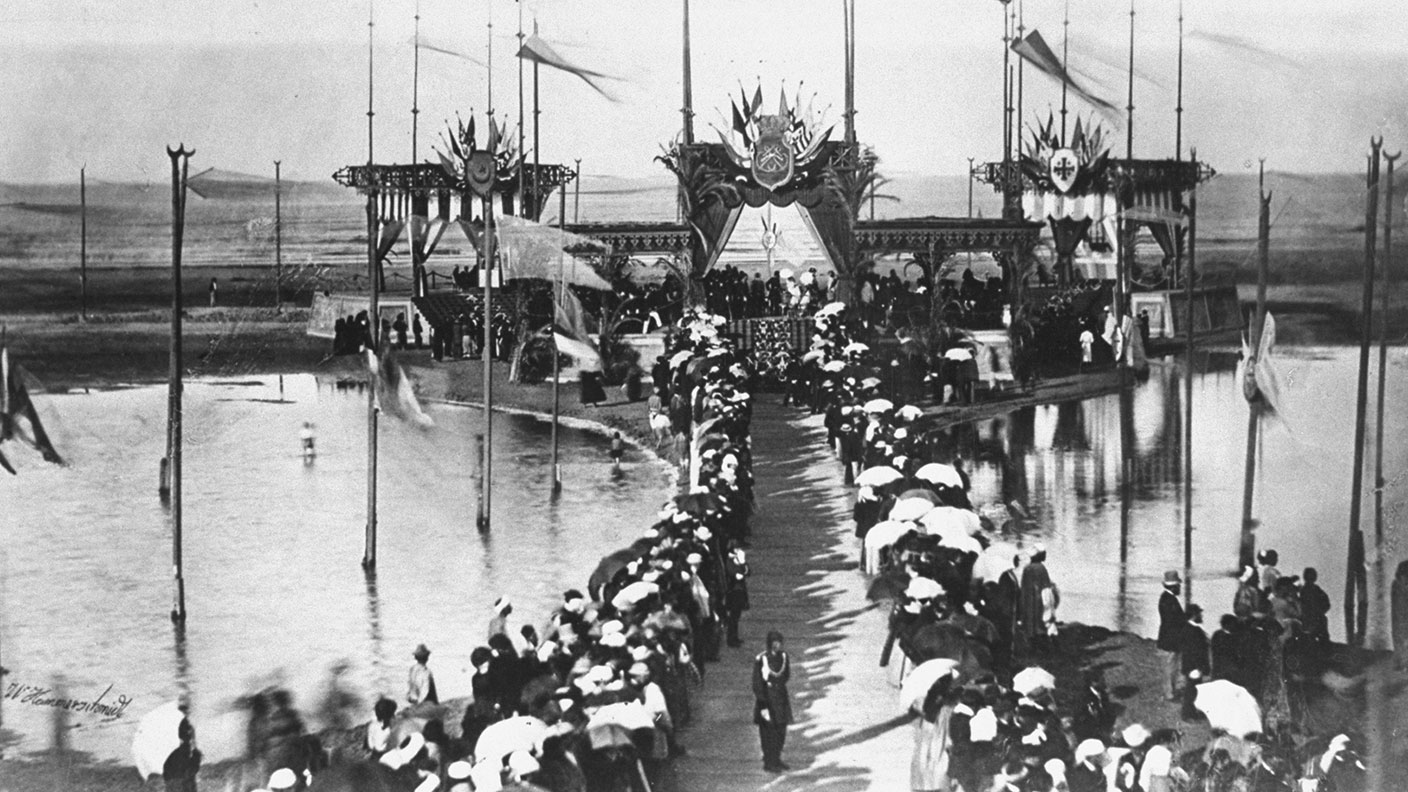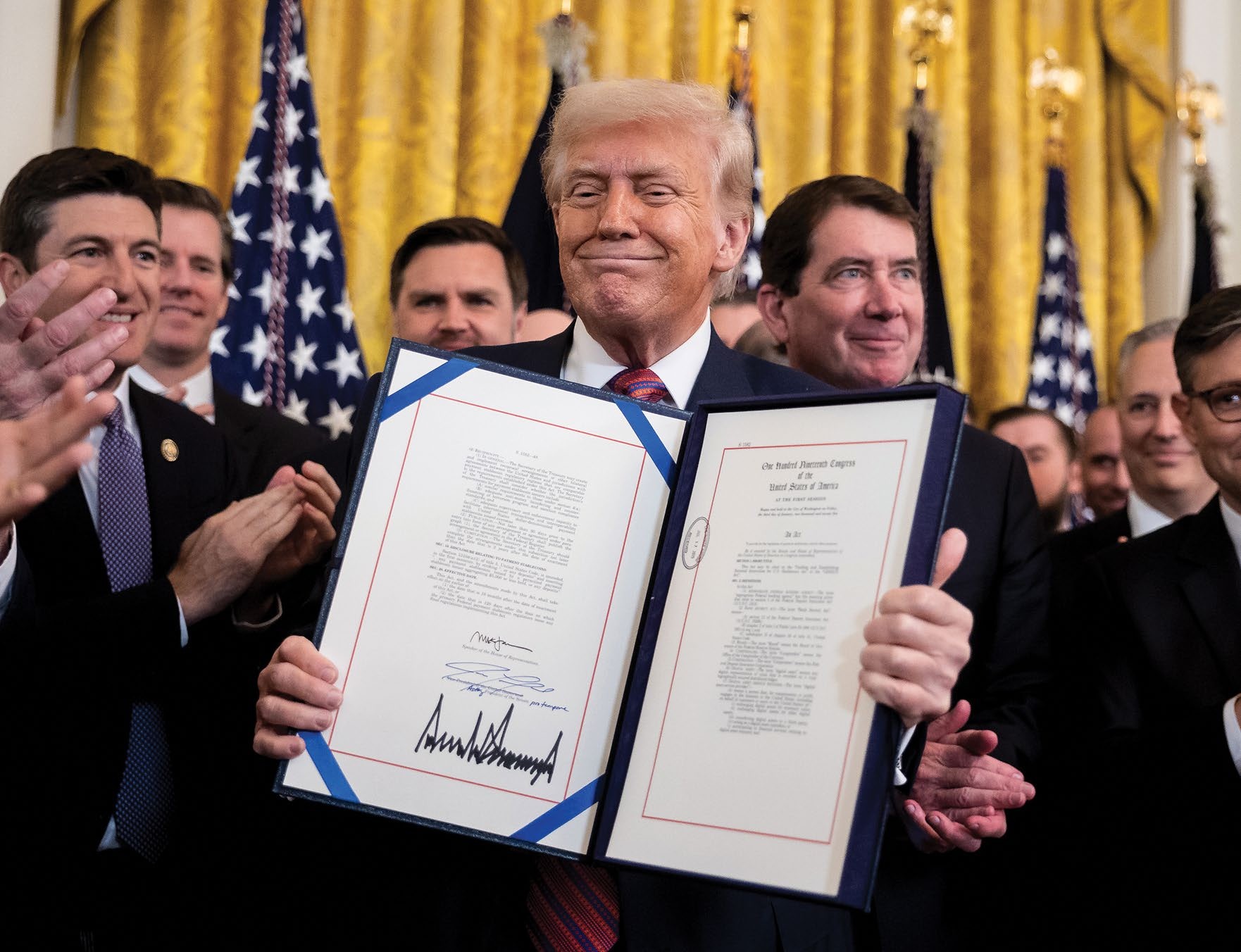
Africa has always been something of an obstacle for people wanting to get from Europe to Asia. And so, quite naturally, those who had cause to go between the two have always hankered after a shortcut. As far back as the 18th century BC, there had been a canal connecting the Mediterranean and the Red Sea via the River Nile. The first was built on the orders of Senausert III. Over the years, it followed a pattern of silting up and being re-dredged by various rulers. But it was eventually abandoned in the 8th century AD.
Napoleon (obviously) had plans to construct a canal in the 1700s, thereby annoying the British who would either have to pay to use it or continue going the long way round. But although construction was started, Boney's plans came to nothing.
However, it was another Frenchman who eventually got the canal built. In 1854, Ferdinand de Lesseps, a diplomat, formed La Compagnie Universelle du Canal Maritime de Suez. The company would construct the canal and operate it for 99 years, after which it would be handed to the Egyptian government.
MoneyWeek
Subscribe to MoneyWeek today and get your first six magazine issues absolutely FREE

Sign up to Money Morning
Don't miss the latest investment and personal finances news, market analysis, plus money-saving tips with our free twice-daily newsletter
Don't miss the latest investment and personal finances news, market analysis, plus money-saving tips with our free twice-daily newsletter
Construction began in April 1859. In the ten years it took to build, over 1.5 million people are estimated to have worked on the canal – many of them died. The canal was opened on this day in 1869 by Eugénie de Montijo, "Empress" of France and wife of Napoleon III.
The canal has a length of 164km, and a depth of eight metres. 30km of its length is through two lakes Lake Timash and the Great Bitter Lake. The canal has no locks, as the terrain between the Mediterranean and Red Seas is flat. At present, much of the canal is only wide enough for one-way traffic – ships must transit the canal in convoys. But in August 2014, the Suez Canal Authority announced plans to enlarge it to enable two-way operation along its entire length.
Get the latest financial news, insights and expert analysis from our award-winning MoneyWeek team, to help you understand what really matters when it comes to your finances.
Ben studied modern languages at London University's Queen Mary College. After dabbling unhappily in local government finance for a while, he went to work for The Scotsman newspaper in Edinburgh. The launch of the paper's website, scotsman.com, in the early years of the dotcom craze, saw Ben move online to manage the Business and Motors channels before becoming deputy editor with responsibility for all aspects of online production for The Scotsman, Scotland on Sunday and the Edinburgh Evening News websites, along with the papers' Edinburgh Festivals website.
Ben joined MoneyWeek as website editor in 2008, just as the Great Financial Crisis was brewing. He has written extensively for the website and magazine, with a particular emphasis on alternative finance and fintech, including blockchain and bitcoin.
As an early adopter of bitcoin, Ben bought when the price was under $200, but went on to spend it all on foolish fripperies.
-
 US stocks: opt for resilience, growth and value
US stocks: opt for resilience, growth and valueOpinion Julian Wheeler, partner and US equity specialist, Shard Capital, highlights three US stocks where he would put his money
-
 The steady rise of stablecoins
The steady rise of stablecoinsInnovations in cryptocurrency have created stablecoins, a new form of money. Trump is an enthusiastic supporter, but its benefits are not yet clear
-
 31 August 1957: the Federation of Malaya declares independence from the UK
31 August 1957: the Federation of Malaya declares independence from the UKFeatures On this day in 1957, after ten years of preparation, the Federation of Malaya became an independent nation.
-
 13 April 1960: the first satellite navigation system is launched
13 April 1960: the first satellite navigation system is launchedFeatures On this day in 1960, Nasa sent the Transit 1B satellite into orbit to provide positioning for the US Navy’s fleet of Polaris ballistic missile submarines.
-
 9 April 1838: National Gallery opens in Trafalgar Square
9 April 1838: National Gallery opens in Trafalgar SquareFeatures On this day in 1838, William Wilkins’ new National Gallery building in Trafalgar Square opened to the public.
-
3 March 1962: British Antarctic Territory is created
Features On this day in 1962, Britain formed the British Antarctic Territory administered from the Falkland Islands.
-
10 March 2000: the dotcom bubble peaks
Features Tech mania fanned by the dawning of the internet age inflated the dotcom bubble to maximum extent, on this day in 2000.
-
9 March 1776: Adam Smith publishes 'The Wealth of Nations'
Features On this day in 1776, Adam Smith, the “father of modern economics”, published his hugely influential book The Wealth of Nations.
-
 8 March 1817: the New York Stock Exchange is formed
8 March 1817: the New York Stock Exchange is formedFeatures On this day in 1817, a group of brokers moved out of a New York coffee house to form what would become the biggest stock exchange in the world.
-
7 March 1969: Queen Elizabeth II officially opens the Victoria Line
Features On this day in 1969, Queen Elizabeth II took only her second trip on the tube to officially open the underground’s newest line – the Victoria Line.

